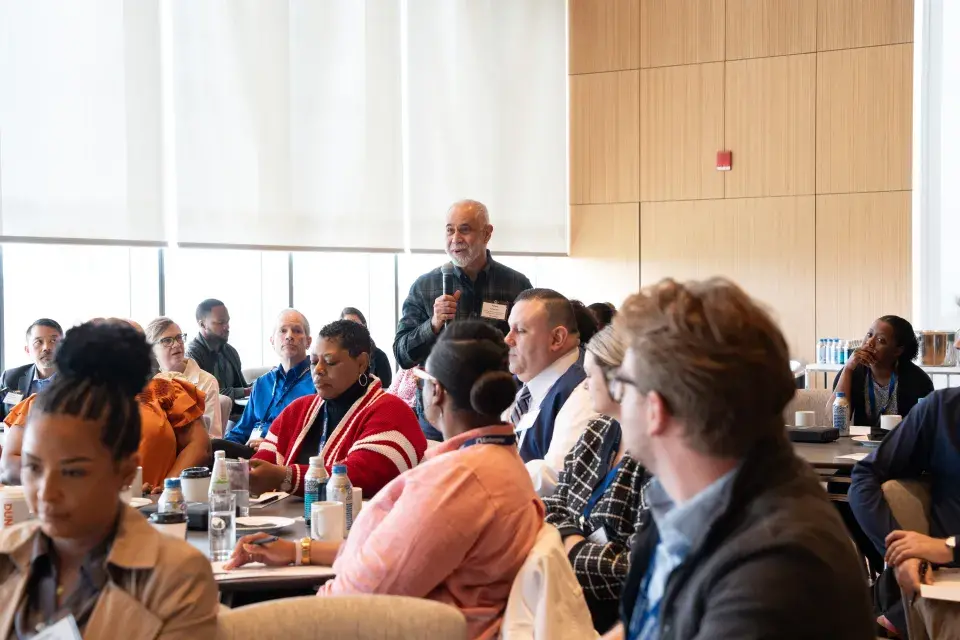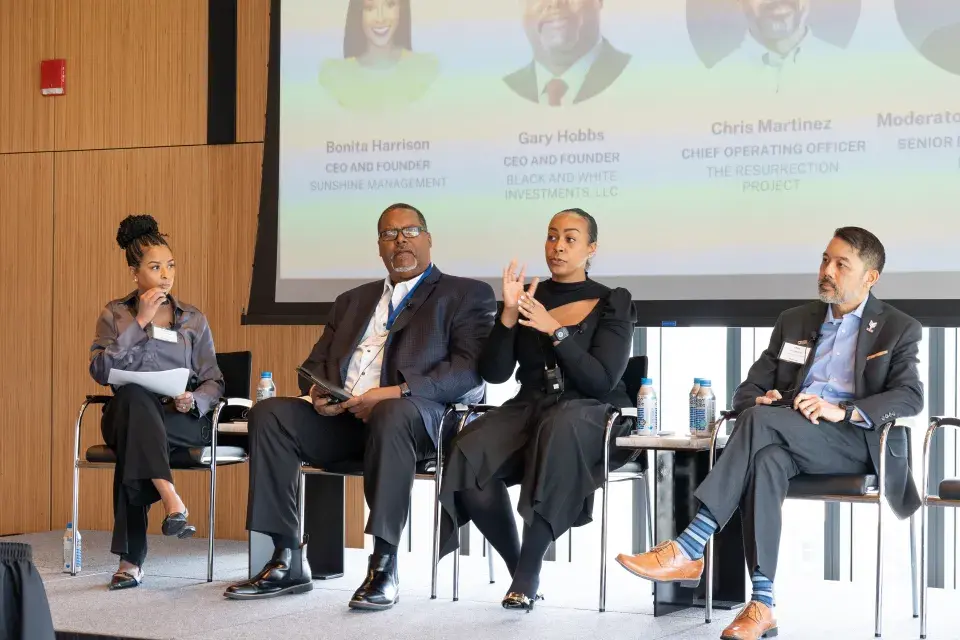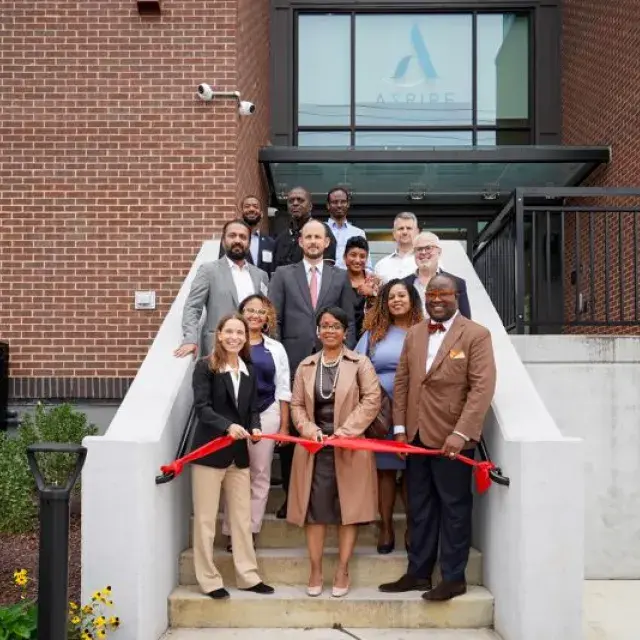The affordable housing landscape is increasingly defined by complexity — rising costs, volatile capital markets, and a policy environment full of both opportunities and roadblocks. But at the 2025 Central Midwest Partner Retreat in Chicago this past May, developers, funders, and asset managers came together to share what’s working, what’s changing, and how to maintain operations for the long term.
Here are eight key strategies to help developers persist and grow — even when the ground keeps shifting beneath them:
1. Build Operational Staying Power Early
Asset management leaders emphasized a shift in focus from compliance alone to long-term operational health. According to Jennifer Buxtin, vice president of national field operations for asset management at Enterprise Community Partners, rising insurance expenses, reduced rent collections, and repairs and maintenance are leading to underperformance in some portfolios. In this challenging operating environment, Buxtin emphasized the importance of budgeting conservatively to better weather the storm.
Building this proactive muscle requires proper staffing and long-term planning. Heather Starzynski, senior director of asset management at NeighborWorks America, highlighted key resources housing providers should have in their asset management toolkit, including a staffing model and a comprehensive asset management plan to guide financial decisions and capital improvements.
Takeaways:
- Treat asset management as a forward-looking strategy, not just a regulatory obligation. Account for rising costs now—and revisit assumptions frequently. Structure your staffing model to ensure efficient division of labor, including clear distinctions between asset management and property management.
Consider creating an asset management plan, which can include information on portfolio financial performance, investment objectives and operational strategies, risk management and exit strategies, and more.
Image
2. Invest in Data and Ground Truth Your Assumptions
Zeroing in at the property level, Eileen Kelly, a transaction asset manager at Preservation for Affordable Housing (POAH), recommended that housing providers invest in data and technology tools to analyze property performance. Integrating this information within an organization’s operations is critical to making informed decisions, anticipating potential challenges, and effectively prioritizing resources.
Felicia Dawson, vice president of Strategic Partnerships at POAH, emphasized the critical importance for housing providers to engage residents as partners and stewards. Resident input can help assess the effectiveness of existing systems and inform the adoption of new property upgrades. For example, input on new sustainability upgrades can ensure they meet resident needs, and investing in resident education on these features can support effective usage — resulting in both improved quality of life for residents and cost savings.
Takeaways:
- Leverage data, invest in technology, and develop systems to properly understand operations at the property level and diverse needs at the portfolio level.
Embed this data and information in your organization’s operations and decision-making processes.
Engage residents to assess if existing systems and new investments are effective and practical.Image
3. Diversify Your Revenue and Portfolio Types
Diversifying the types of deals developers pursue can stabilize income streams and attract new funding. BWI’s expansion into workforce and mixed-income housing, Sunshine Management’s creative push for missing middle infill development, and The Resurrection Project’s conversion of student housing enabled all three developers to scale their development pipeline while maintaining a healthy financial footing.
Understanding a funder’s underwriting standards and your region’s development landscape can help inform which new development models to pursue. Panelists on the funding roundtable highlighted that acquisition-preservation projects and predictable deals with less red tape are easier to underwrite, given continuing uncertainty around tariffs.
Takeaways:
- Consider layering project types—preservation and new construction, rental and for-sale, subsidy-supported and unsubsidized—to hedge against shifting market and policy conditions.
When pivoting to new development models, understand your funders’ underwriting criteria and the current development landscape.
Image
4. Partner Early, Not Late
The funder roundtable was clear: relationships matter more now than ever. Whether it’s picking the right syndicator, lining up a philanthropic investor, or getting local government buy-in, early engagement is essential to managing complexity and capital gaps.

In efforts to foster partnerships, the convening brought together technical assistance providers during its Ask Me Anything Showcase to serve as a resource to developers. These service providers offer expertise in architecture, project finance, sustainability incentives, property and asset management, and more. Abby Sullivan, director of process improvement for the city of Chicago, spoke about how the city is implementing its Cut the Tape initiative, a set of policy and process improvements aimed at streamlining the development process. She emphasized the value in communicating barriers to local officials to help influence similar efforts and influence more efficient approaches.

Takeaways:
- Start building relationships at the concept phase of a project. “It’s a 15-year partnership,” as multiple panelists stressed—know who you’re in it with from the start.
- Tap into your region’s network of service providers and technical experts—they're keyed into changes in regulatory and policy updates, available resources and funder requirements, and best practices.
5. Invest in Internal Capacity—Even Before It Feels Comfortable
All three developers on the “Growing Your Business” panel agreed: one of the most transformative decisions they made was hiring early—especially in finance, operations, and project management.
Bonita Harrison, CEO and founder of Sunshine Management, emphasized that going from a solo operator to a team of nine allowed her to stop doing everything herself and focus externally on growth and alignment. If project-based fees and revenue are insufficient to hire a full-time staff person, look to philanthropic sources or partnerships to share key organizational functions.
Takeaway:
Growth doesn’t wait for perfect timing. Ensure that you’re setting aside appropriate funding for operational costs, and hire with intention and delegate with trust.
Image
6. Get Serious About Financial Readiness
Panelists and funders alike echoed the same refrain: if you want funding in today’s challenging environment, your books need to be in order. That includes multi-year financials, updated audits, and consistent projections.
Allison Porter-Bell, director of commercial banking at BMO, and Monica Warren Jones, strategic projects director at for Enterprise Community Loan Fund, the organization’s community development institution, emphasized that CDFIs and banks are taking a more intense underwriting approach, especially as operating risks rise and soft debt becomes harder to stack.
Takeaway:
- Before you shop your next deal, make sure your house is in order and that you understand your deal’s fundamentals inside and out. Incomplete documentation can lose you real opportunities in today’s tight capital market.
7. Don’t Let Mission Drift Become the Price of Capital
Every session returned to one core tension: how to remain mission-aligned in a financial environment that increasingly pushes for short-term returns and inflexible deal structures. Whether navigating public program requirements that limit equity-building or pushing back on unrealistic assumptions from funders, developers at the retreat urged their peers to protect the “why” behind their work.
Takeaway:
- Say no when a deal compromises your vision. The strongest projects are built on clarity of purpose—and the ability to communicate that to funders and community alike.
8. Lean Into Affordable Housing’s Enduring Strength
Even in the face of rising interest rates, declining tax credit pricing, and growing operating costs, affordable housing continues to demonstrate staying power. Regan St. Pierre, director of project finance and consulting at Cohn Reznick, and Mike Rossi, vice president of Enterprise’s housing credit investments business, said that Low-Income Housing Tax Credit properties remain a particularly resilient asset class—their performance has continued to hold steady, even in a challenging post-COVID environment.
Their perspective reinforces what many developers have found: affordable housing, when structured thoughtfully, remains a stable and mission-driven investment—even when market conditions shift.
Takeaways:
- Amid economic volatility, affordable housing continues to draw investment.
- Use conservative assumptions and stress-test your deals to ensure long-term sustainability in an evolving market.

